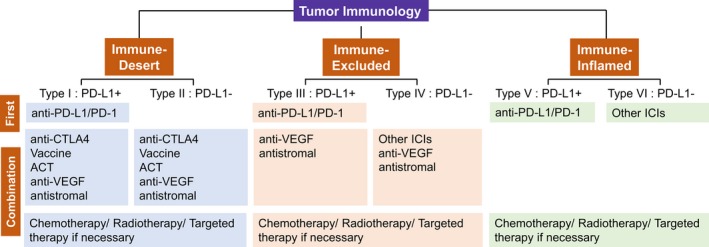Figure 3.

Modified immune profiles for tailoring immunotherapy‐based treatment. The presented modified framework for stratifying tumors is simplistic but allows a platform to discuss the immune‐based therapies best suited to the six different tumor microenvironments. Generation of tumor‐specific T cells is the rate‐limiting step in Type I and Type II tumors, and thus, combination therapy designed to activate T cells, bring specific T cells into tumors and then avoid them being turned off, would be considered. T‐cell migration through the tumor stroma is the rate‐limiting step in Type III and Type IV tumors; thus, antistromal therapy is recommended to break the mechanical barrier. As the inflamed environment facilitates the antitumor immunity, and the preexisting antitumor immune response is turned off by the particular checkpoint or other suppressors, therapies targeting specific checkpoint or other suppressors may be the priority in Type V and Type VI tumors. ACT, adoptive cell therapy. ICIs, immune checkpoint inhibitors
